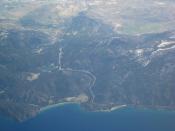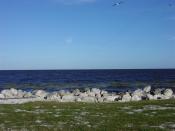A six week study between February 6, 1998 through March 29, 1998 was undertaken to evaluate how various parameters typically measured and analyzed by limnologists can affect a freshwater lake's water quality and its ability to provide a suitable habitat for a diverse species of aquatic plants and animals. The lake selected for this study was Springtree Lake located in the northwestern part of Jacksonville, Florida. The five parameters that were measured included air and water temperatures, turbidity or water clarity, salinity, pH, and dissolved oxygen. The results of this research and testing indicated that these parameters were within acceptable ranges for a freshwater lake. Springtree Lake has been an aquatic ecosystem that is capable of sustaining a habitat for various aquatic macrophytes, phytoplankton, zooplankton, and larger animals including fish and waterfowl. The results presented in the tables and accompanying graphs and figures further illustrated that Springtree Lake provided an environment with a stable water quality that not only sustained many animal and plant species which were metabolically productive, but also enabled area residents to use it for their recreation, aesthetic purposes, and enjoyment.
INTRODUCTION
Definitions and Concepts
Limnology is the field of science concerned with the study of freshwater ecosystems, which include wetlands, such as marshes, ponds, and lakes, the transitional zones between land and water. Although in the literature, there has been a trend to understand, describe, and effectively manage these aquatic environments, there is seemingly no correct, indisputable, ecologically sound definition for lakes because of their individual needs and diversity (Noss, R., LaRoe, III, T., & Scott, J. M., 1995, p. 4). Like successors, Forel in 1892 defined a lake as an inland depression with standing water that serves as a basin and lacks continuity with the sea (as cited in Welch, 1952, p. 15). In fact,


